While niche crops such as tropical fruits, garlic or sweet potatoes have gained a lot of importance in recent years, table grapes from German production are still a rarity. In the greenhouses of the Kremers farm in Heinsberg, directly on the German-Dutch border, dark, red as well as light grapes have been growing and thriving since 2011. Although the plump fruits testify to quality and freshness, they are mainly marketed directly from the farm, whether as fresh fruit in the skin or as direct juice.
"Our grapes are neither fertilized nor sprayed and are therefore 100% natural," emphasizes grower and owner Heribert Kremers as he leads us through the glasshouses. However, in order to be allowed to supply the German food retail trade, organic certification would be required. To be allowed to join an association as a member, I would have to pay between 800 and 1000 euros a year, which in turn would no longer be profitable. I have also tried in vain to acquire a few young people to grow grapes in order to supply the market together with regional and, above all, high-quality grapes."
Tough competition with southern European grapes
Table grapes are usually harvested and marketed from mid-July through October. "In contrast to many other fruit crops, the harvest time for table grapes is not completely fixed; instead, they can be left to hang quietly for a few more weeks and harvested as needed. Theoretically, we would even be marketable until Nicholas. However, we withdraw from the market in October, because the Mediterranean countries, whether Italy, Spain or Greece, then hit the market with larger quantities at lower prices (FreshPlaza.de reported). Then, at the end of October, the southern European citrus season also gets going, whereupon grape consumption noticeably declines."
The range of products offered by Obsthof Kremers includes numerous varieties, such as Muscat Bleu, Vanessa, Fanny and Venus. Says Kremers, "Our varieties are all mildew resistant. We also equipped our plants with protective nets against birds and wasps in the winter of 2021." However, the yield per plant varies greatly, the passionate grower continues. "Venus is the highest-yielding variety with up to 10 kg per plant, and Fanny also does quite well with 7-8 kg/plant. August has been a bit too dark this year, which is why we had less thermals in our glasshouses. The outside temperature, on the other hand, is less relevant to the final yield."
From the region, for the region
Kremers took the plunge into growing table grapes in 2011, when he decided to give up his nursery. He then stocked the then empty glass houses from the 1970s with the first plants. "In the first few years, a native Iranian who worked as a consultant at the Chamber of Agriculture accompanied me closely. Regional, short distances to the consumer was my motto even then. In the first few years, we invested a lot in variety selection and built up a network of buyers," says the 61-year-old, who now mainly supplies fruit farms and farm stores in a 40km radius.
The new season starts in mid-January with the pruning of the plants. After that, the vents are closed. The white Maipec film is then removed so that the black film can absorb the heat properly. In May, the plants are pruned in two stages and the white film is returned to the greenhouses. In the second half of June, the growth in length becomes less, while the growth in thickness increases. At this stage it is necessary to cut back the plants: The grapes need the remaining leaf mass for the last phase of growth. Shortly before harvest, the fourth and final cut follows, in which the plants are cut free to eliminate rot.
Future of the Heinsberg table grape
As a pioneer in table grape cultivation, Kremers has had to partly invent the wheel itself. Unfortunately, a successor solution for the innovative company is still missing. Will this mean that the regional table grape will soon disappear from the range? "Ideally, I would retire in a few years and only provide advice to a young, committed tenant as the business owner. We have built up the know-how over many years and could also plant a few more hectares with table grapes, possibly outdoors with a cap. But I would also be open to an alternative solution in which my plant is merged into an existing farm and rebuilt elsewhere. There's a lot of possibility there."
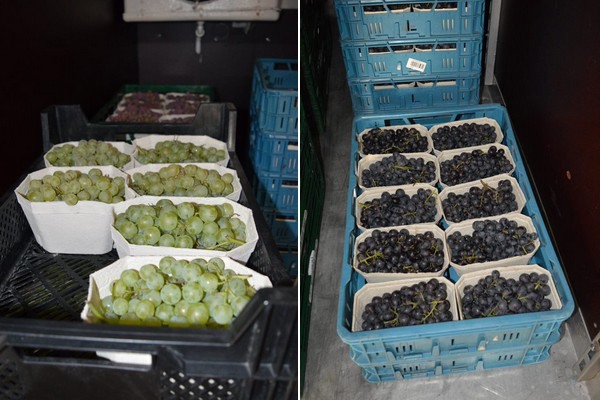 Packed grapes in trays ready for delivery.
Packed grapes in trays ready for delivery.
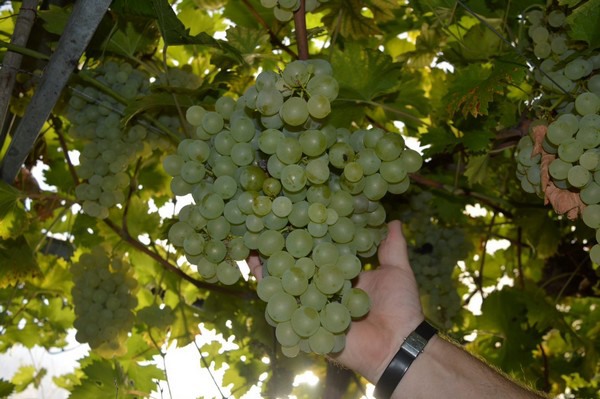 Plump table grapes of the Fanny variety.
Plump table grapes of the Fanny variety.
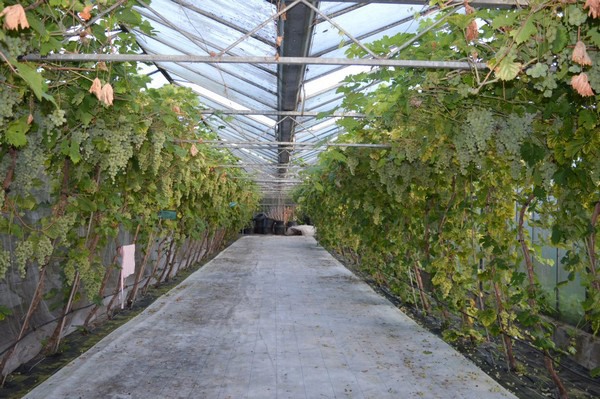
View into the grape greenhouse: due to the selection of varieties, the use of Maipec films and the greater distance between the rows, mildew is rather a rarity on the farm. If an isolated case does occur, baking powder is used as a biological measure.
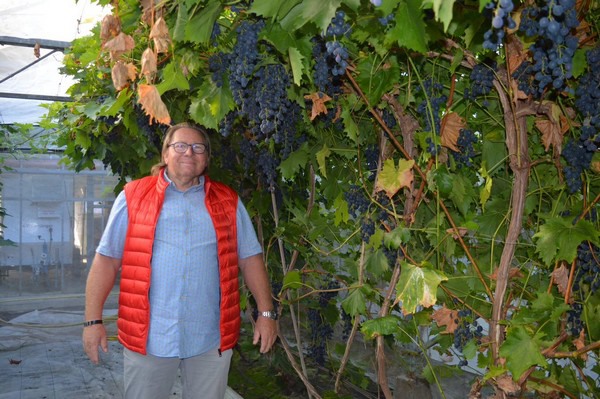 Heribert Kremers in his grape greenhouse: In the picture: the Venus variety.
Heribert Kremers in his grape greenhouse: In the picture: the Venus variety.
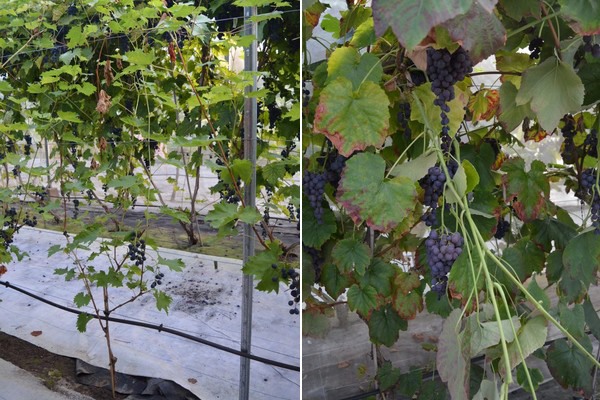 Left: Young trees
Left: Young trees
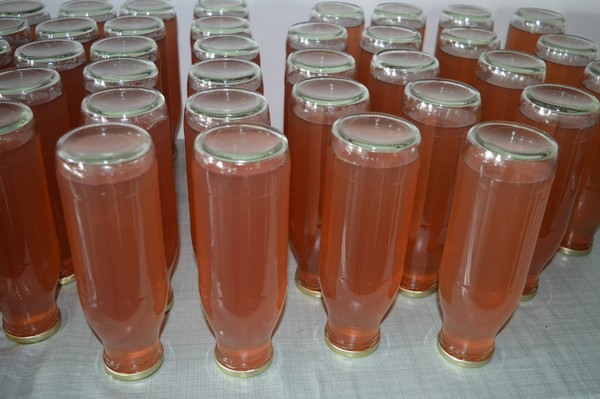 Part of the yield is processed into direct juice on site.
Part of the yield is processed into direct juice on site.
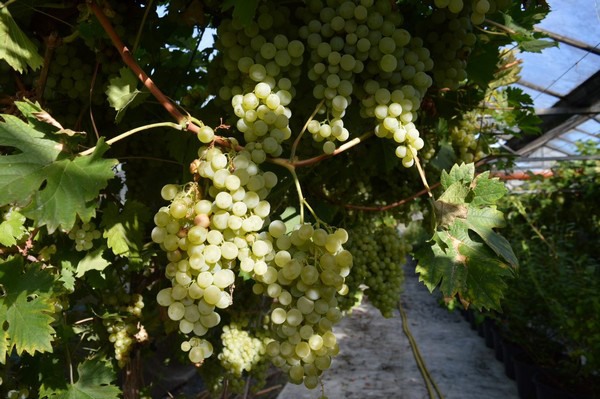 Grapes ready for harvest: harvesting usually takes place three times a week.
Grapes ready for harvest: harvesting usually takes place three times a week.
For more information:
Heribert Kremers
Kremers Tafeltrauben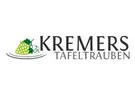
End 39
52525 Heinsberg
+49 (2452) 7372
[email protected]
www.kremers-tafeltrauben.de
